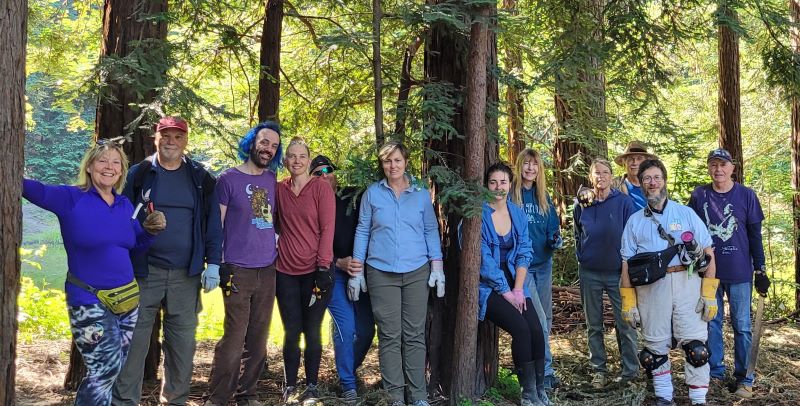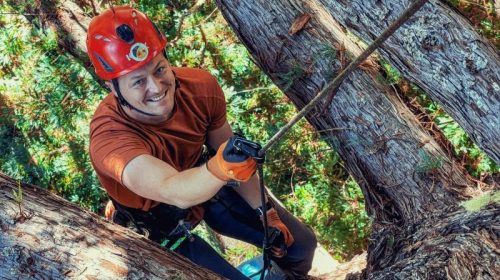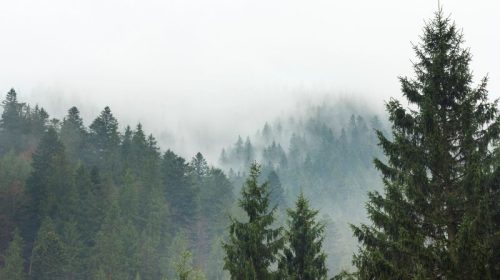Lake Lompico: A Labor of Love
Restoration and Demonstration Project in Progress
By Julie Horner
Through the San Lorenzo Valley Native Habitat Restoration Program under the auspices of the Valley Women’s Club, the Lompico Pond Restoration and Demonstration Project involves a group of dedicated outdoor enthusiasts who have been meeting on the last Saturday of every month to restore a small mountain lake. Affectionately known as “Guacamole Pond,” Lake Lompico is tucked into a tight-knit residential neighborhood at the junction of Lake Boulevard and Lakeshore Drive, just up the hill about a mile or so from Lompico Park. Plagued with an excess of nutrients from nearby septic systems, the nickname reflects the lake’s varying surface greens: Parrotfeather (Myriophyllum aquaticum, non-native); Duckweed (Lemna minor, a native); and chronic Harmful Algal Blooms (HABs) containing cyanobacteria, which is toxic to humans and dogs. The property is owned by the County of Santa Cruz and is marked by a kiosk at the roadside which displays information about the restoration project. The team celebrates its one-year anniversary this month.
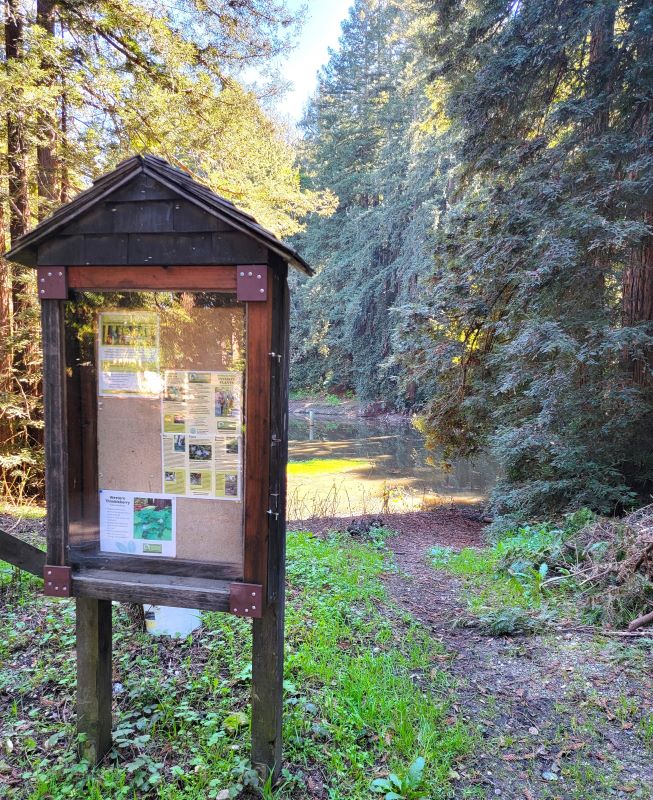
The restoration idea was a dream for neighbor Julie Ward, who invited her book club to Lake Lompico one afternoon in 2022 to discuss their book of the month, Braiding Sweetgrass: Indigenous Wisdom, Scientific Knowledge and the Teachings of Plants, by Robin Wall Kimmerer. Inspired by the book, Julie contacted the Resource Conservation District (RCD) of Santa Cruz County in hopes that the heavily overgrown, murky body of water and surrounding areas could be cleaned up. A site visit was arranged with RCD, Santa Cruz County Environmental Health, and native plant and water quality experts. RCD Environmental Consultant George McMenamin filed an assessment, which included recommendations for non-native vegetation control, a proven first step toward rehabilitation. Once invasives are removed, native species are able to reestablish.
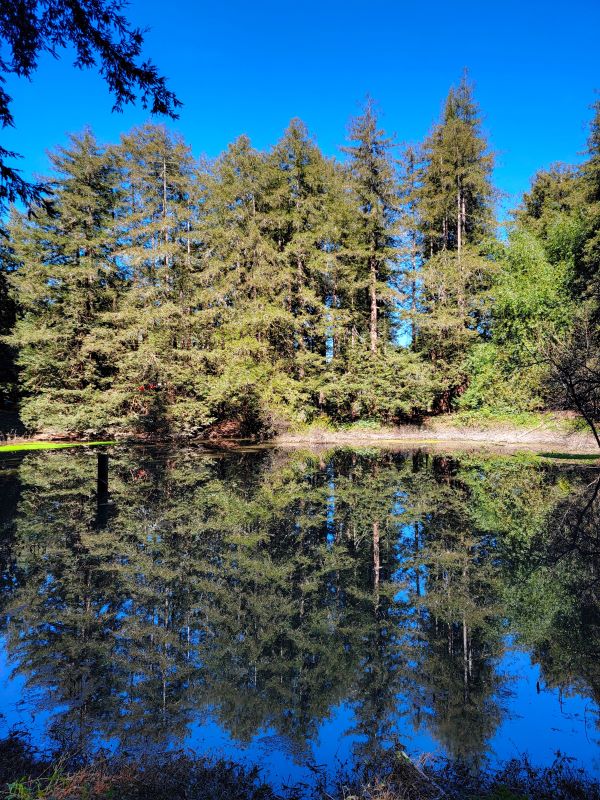
Jennifer Gómez is a Lompico local and nature enthusiast who lives with her family down the street from the pond and knows her neighborhood well. Experienced in “broom bashing” from volunteering with habitat restorationist Linda Brodman with Friends of Quail Hollow Ranch County Park, Jenni learned of Julie’s efforts with the RCD and assisted at the site visit by helping identify invasive species. Through contacts at the Valley Women’s Club, Jenni reached out to naturalist and director of the SLV Native Habitat Restoration Program Linda for information on next steps.
Restoration Blueprint
With their restoration blueprint in hand, volunteers began work removing invasive overgrowth in the spring of 2023. Among the violators: English ivy (Hedera helix), Forget-me-not (Myosotis latifolia), French broom (Genista monspessulana), Himalayan blackberry (Rubus ursinus), Panic veldt grass (Ehrharta erecta), Periwinkle (Vinca major), and Spiderwort (Tradescantia fluminensis). Jenni said, “Everything that you see right here used to be broom. It’s a fire ladder, and it’s dry; it’s pretty much gasoline when it dries out in the summertime, it’s a natural accelerant.”
The area was also thick with Himalayan blackberry. Using a braiding technique that Linda taught them, most of the blackberry is now gone. The remediation strategy involves trimming away the long tendrils then winding the remaining stems around each other, encouraging them upwards by removing the leaves as you go so that the only leaves remaining are at the very top. This disables the plant’s ability to spread outwards and set roots. By repeating the braiding process every few months, the plant starves, eventually dies, and does not come back. The team is also working in the stands of redwoods to remove the suckers, which act as ladder fuel.
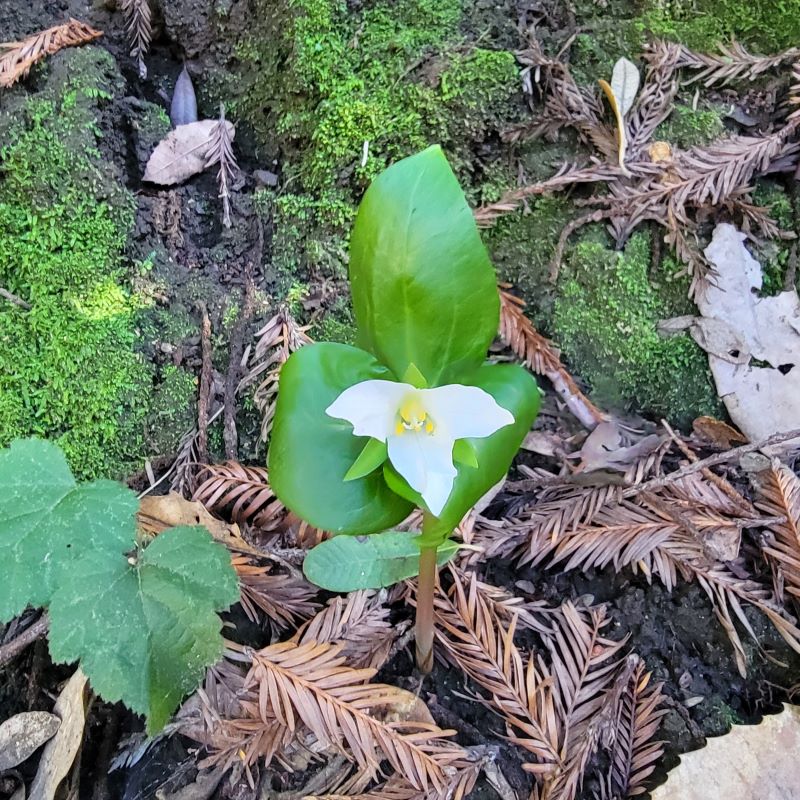
With the thicket of overgrowth removed, the team employed erosion control techniques like mulching and runoff diversion to stabilize the soil and improve the trail encircling the pond. Most of the vinca/periwinkle has been abated. The delicate purple flowers are pretty to look at, but according to the California Department of Fish and Wildlife, a thick infestation of periwinkle will choke out native species and alter an area’s ecology. Now the native California Hedgenettle (Stachys bullata) and Western ginger (Asarum caudatum) have reappeared, and Pacific trillium and Pacific Coast Native Iris are blooming. Jenni said that families and dog walkers make regular use of the area.
Lake Lompico at its Grass Roots
Jenni is a Geographic Information Systems (GIS) Analyst with the County and has studied historical maps of the area but said it’s not clear from her research whether the pond is natural or manmade. Chris O’Neil, a Hydrologic Tech with the US Geological Survey USGS said, “It is a stagnant freshwater pond (no outlet, no stream inlet except right after rains, spring and runoff water fed).” Jenni and her husband paddled out in a kayak before last year’s rains to determine the pond’s volume. Using GPS, a very long tape measure, and a plumb line, they measured two transects across the pond at 10-foot intervals and uploaded the data into GIS software, which measured the spatial correlations. The lake is about 2 ⁄ 3 acre across, depending on the time of year, she said, and the deepest point at the time of measurement was approximately 4 feet. The pond never dries up, even in severe drought years. Bordered by private homes and several small, unbuildable forested lots, the pond is replenished by rainwater runoff. In heavy rain years, the pond spills its banks and flows mostly unchecked down Carol Avenue where it eventually meets Lompico Creek. The excess water can cause travel issues for residents on Lakeshore Blvd.

The pond is home to small fish like bass and western mosquitofish, which were introduced by Santa Cruz County Mosquito Abatement Vector Control. Crawfish, water striders and damselflies, and herons along with invasive frog species and red-eared slider turtles (which are probably released pets) are also part of the ecosystem. Turkeys have visited while the team is at work. Overhead there are crows, pigeons, buzzards, songbirds, and jays, and toward evening the endangered little brown bat (Myotis lucifugus) makes an appearance. According to George McMenamin’s report and supported by other experts like Fisheries and Aquatic Biologist Don Alley, Lake Lompico could potentially host endangered California red-legged frogs (found in upper Bean Creek) or Western pond turtles (found at nearby Loch Lomond Reservoir).
Jenni says the size of the pond makes the project manageable for a small group of volunteers. “It’s like you could put your arms around it, give it a big hug.” Neighbors have rallied to support the effort by helping keep adjoining properties tidy. The team’s work over the last year has environmentally positive trickle-down effects. “It seems that everything that we do here has ongoing benefits.”
Lompico Pond volunteer days are the last Saturday of every month from 10 am to noon.
More information: slvhabitatrestoration.org/project/lompico-pond-felton-ca
To volunteer: slvhabitatrestoration.org/hands-on-adventure-volunteer-for-restoration
Julie Horner writes about the people and cultures of the Santa Cruz Mountains. Email: julie@slvpost.com
Featured photo: Lompico Pond Restoration and Demonstration Project team | Contributed by Jenni Gomez
***
Have a story to share? The San Lorenzo Valley Post welcomes your Santa Cruz Mountains news, story ideas, photos, and letters. Send us an email.
Sign up for our newsletter to stay connected to news and events in the Santa Cruz Mountains.
The San Lorenzo Valley Post is your essential guide to life in the Santa Cruz Mountains. We're dedicated to delivering the latest news, events, and stories that matter to our community. From local government to schools, from environmental issues to the arts, we're committed to providing comprehensive and unbiased coverage. We believe in the power of community journalism and strive to be a platform for diverse voices.

